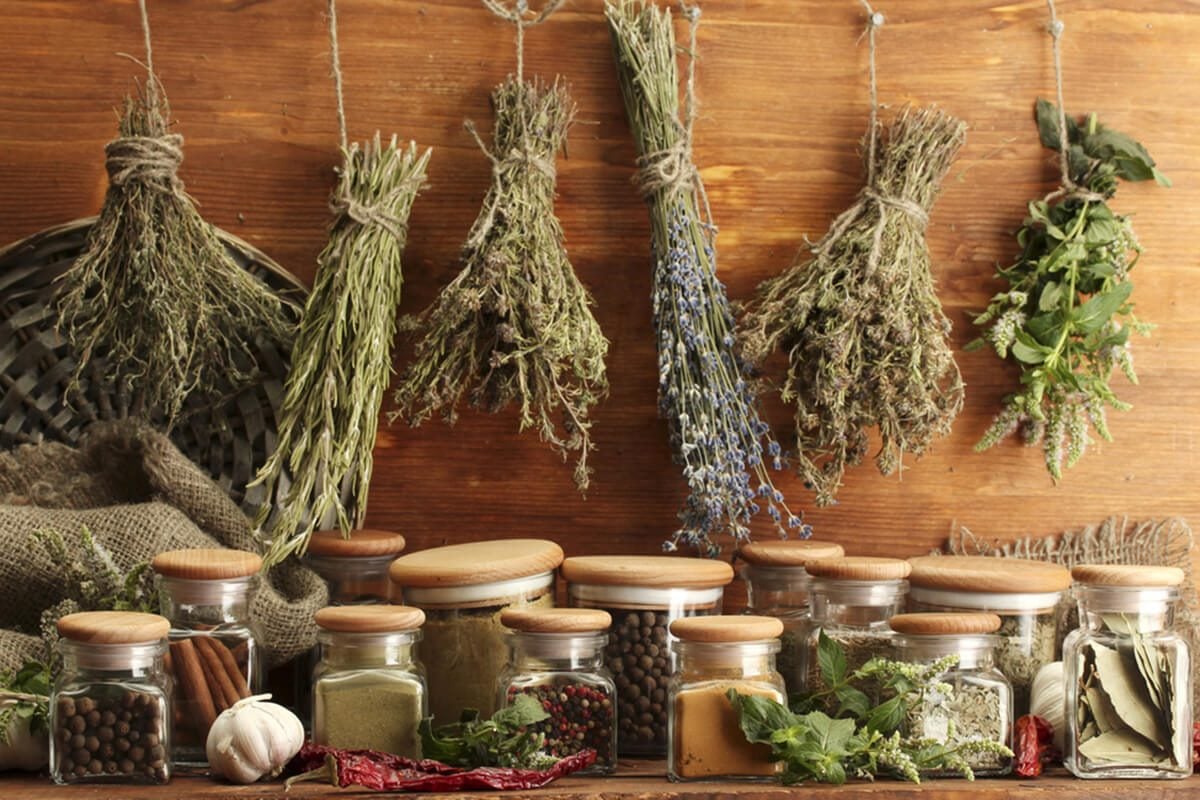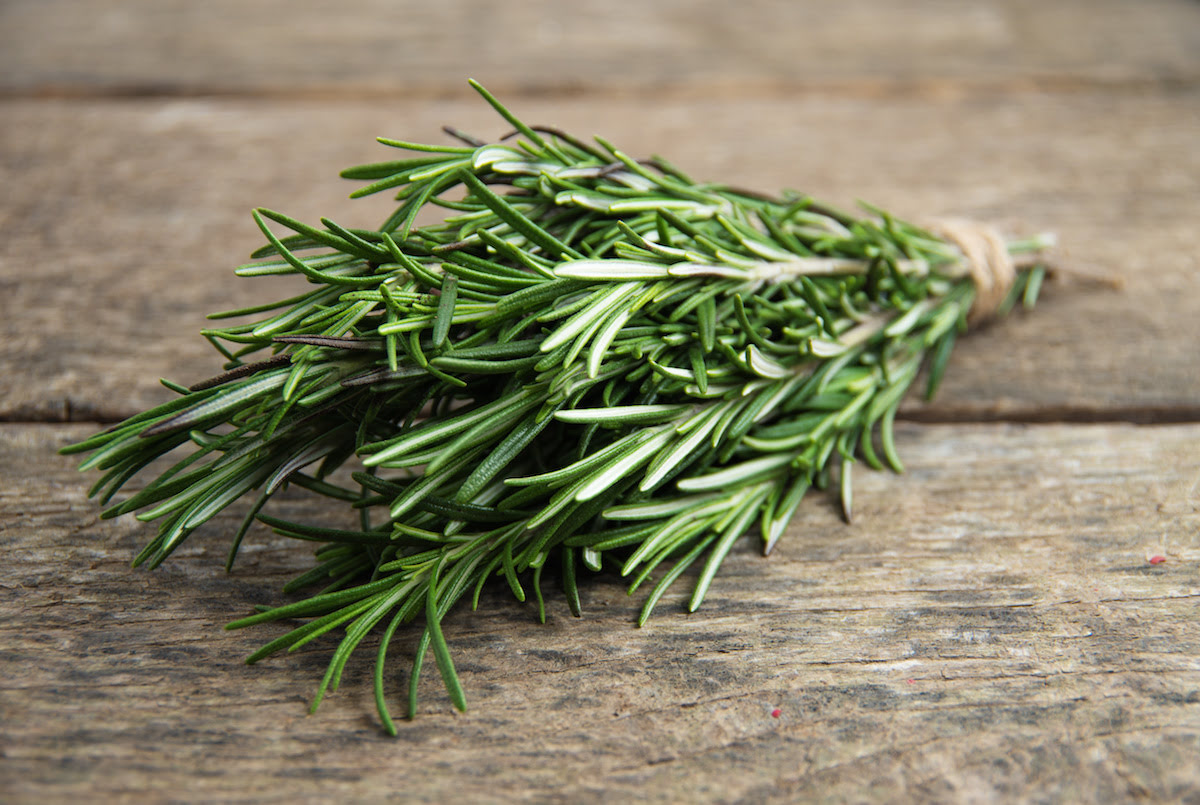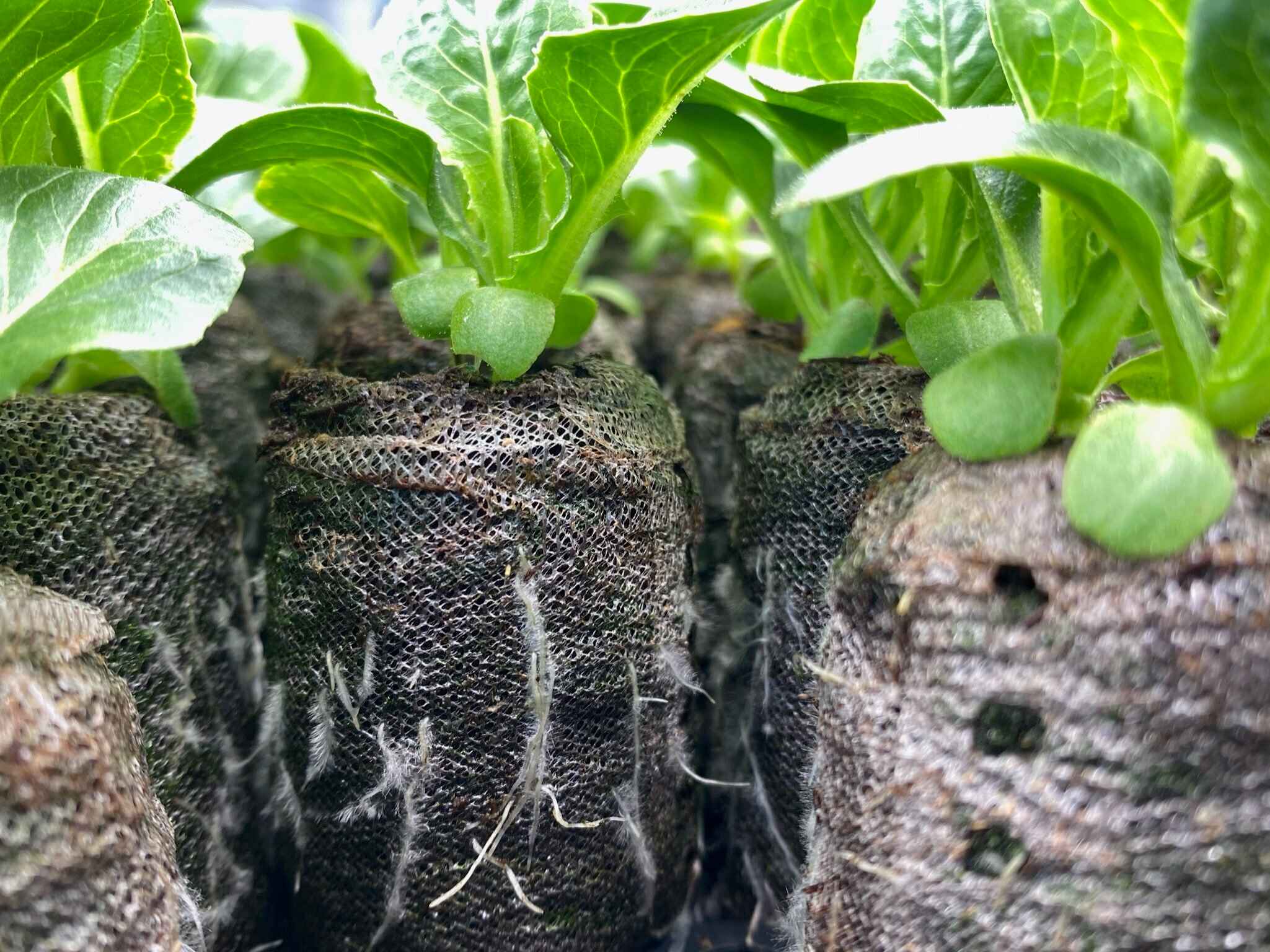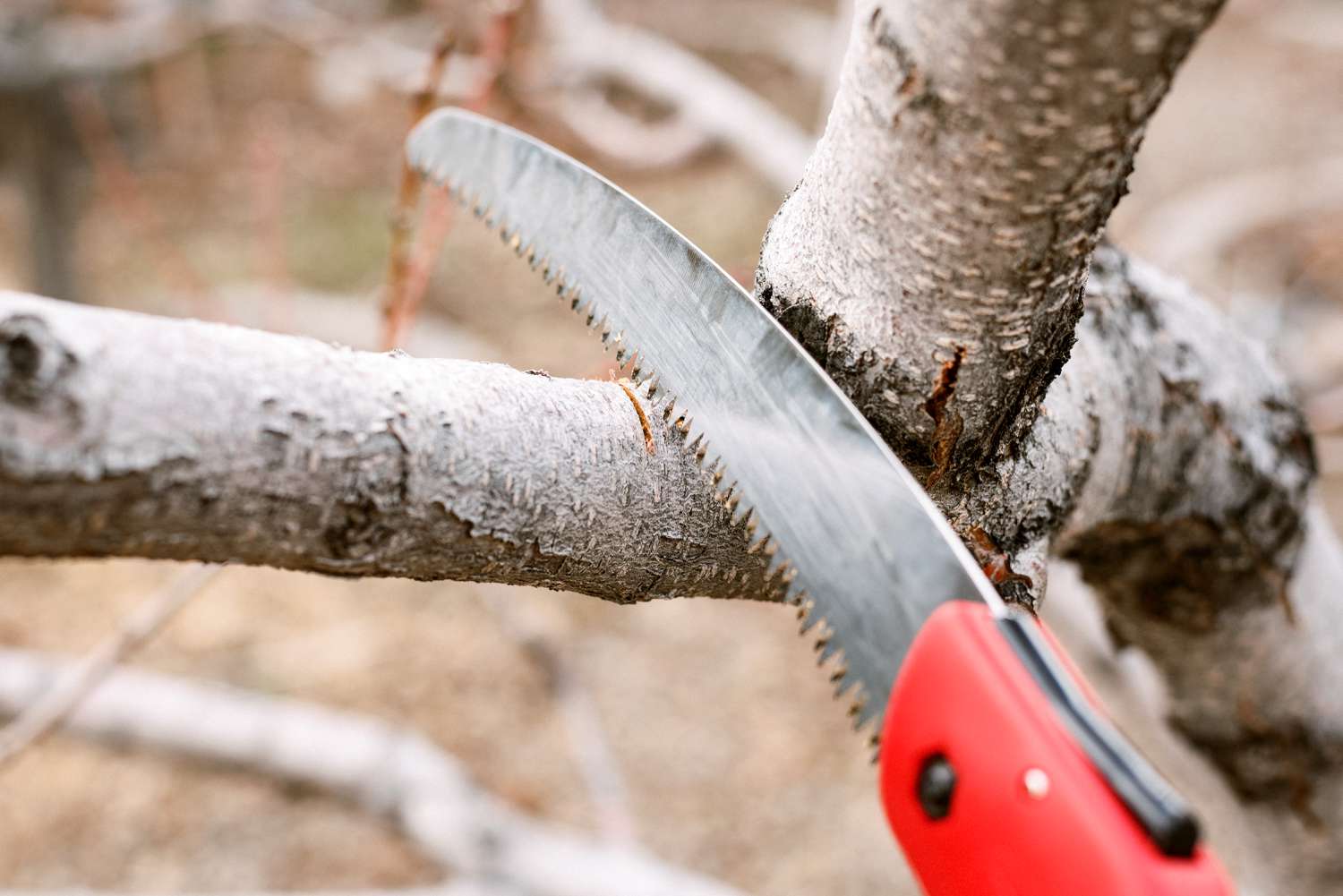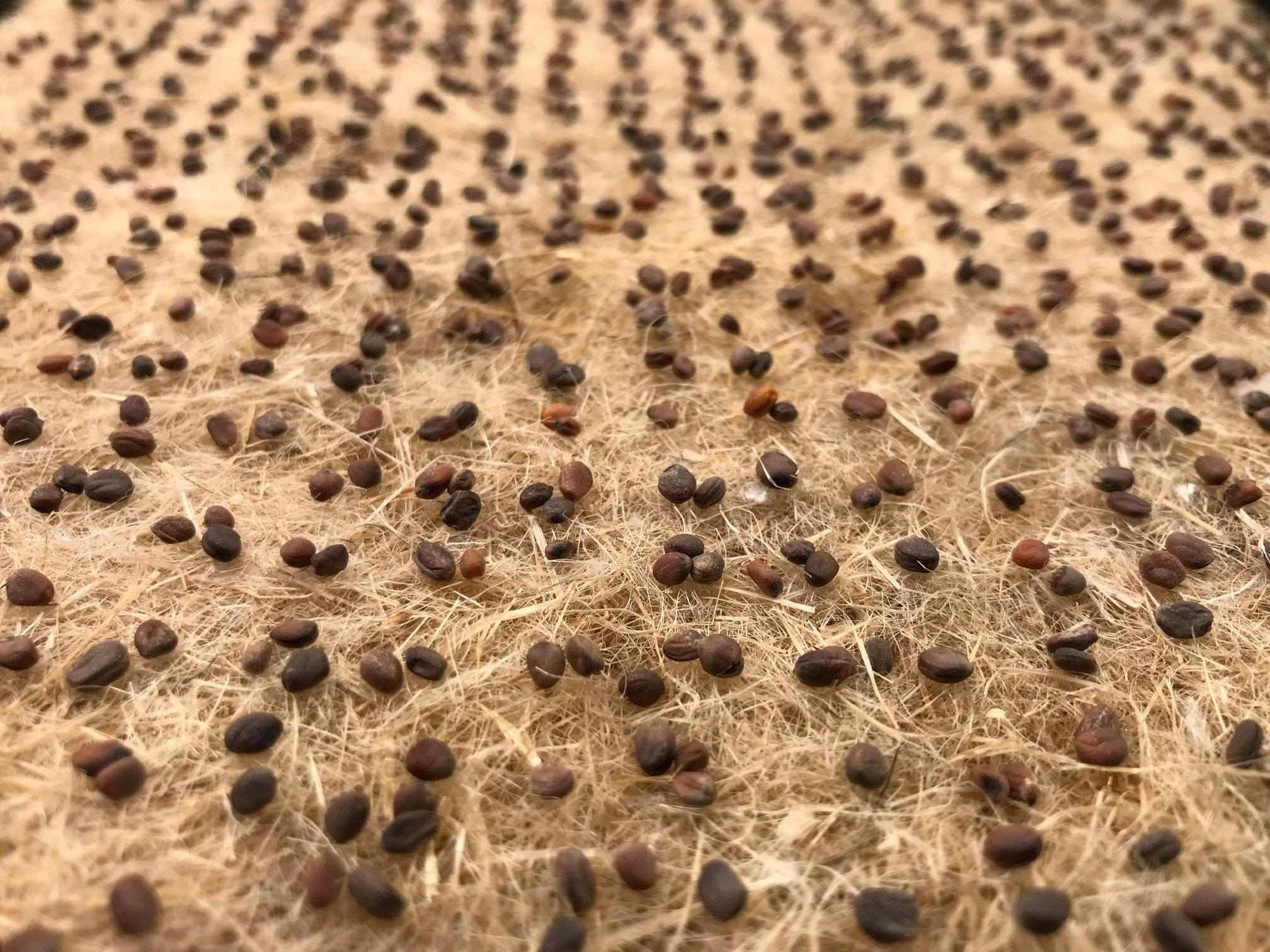Home>Gardening News and Trends>Gardening Trends>What Herbs Are Used In Herbs De Provence
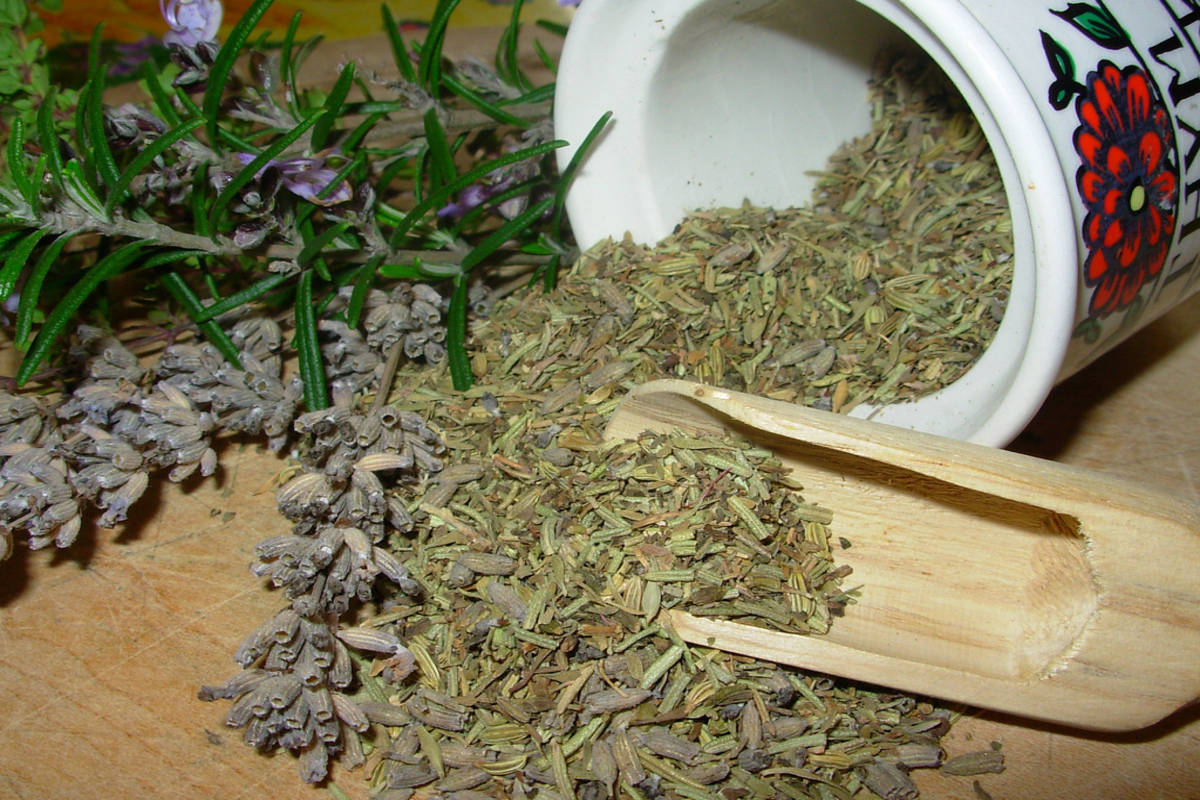

Gardening Trends
What Herbs Are Used In Herbs De Provence
Modified: January 22, 2024
Discover the top gardening trend of using Herbs De Provence in your garden. Learn about the different herbs commonly included in this classic French herb blend.
(Many of the links in this article redirect to a specific reviewed product. Your purchase of these products through affiliate links helps to generate commission for Chicagolandgardening.com, at no extra cost. Learn more)
Table of Contents
Introduction
Herbs de Provence is a classic blend of aromatic herbs that originated in the Provence region of France. This versatile herb mixture adds a delightful flavor and aroma to various dishes, making it a staple in French cuisine. With its rich history and unique composition, Herbs de Provence has become a popular choice among chefs and home cooks alike.
Known for its warm and fragrant profile, Herbs de Provence typically includes a combination of herbs such as thyme, rosemary, savory, marjoram, and lavender. These herbs are carefully selected to create a harmonious blend that adds depth and complexity to a wide range of recipes. The exact composition may vary depending on the region and personal preferences.
Herbs de Provence not only enhances the taste of dishes but also offers several health benefits. The herbs used in this blend are known for their antioxidant properties, anti-inflammatory effects, and potential antimicrobial activity. Furthermore, incorporating Herbs de Provence into your cooking can elevate the nutritional value of your meals.
In this article, we will delve into the fascinating world of Herbs de Provence. We will explore its history, the common herbs used in the blend, the health benefits it provides, as well as its culinary uses. Whether you are an avid cook or simply appreciate the flavors of traditional French cuisine, this article will provide you with valuable insights into the world of Herbs de Provence.
History of Herbs de Provence
The history of Herbs de Provence can be traced back to the picturesque region of Provence in southeastern France. This iconic herb blend has been used for centuries and is deeply rooted in the culinary traditions of this area. The blend captures the essence of the Provencal countryside, with its abundant fields of fragrant herbs and vibrant flavors.
The origin of Herbs de Provence can be attributed to the agricultural practices and herb cultivation that thrived in Provence during the Middle Ages. The region’s favorable climate, fertile soil, and abundant sunlight created optimal conditions for growing a wide variety of herbs.
Herbs have always played a significant role in Provencal cuisine, adding flavor and character to traditional dishes. As culinary practices evolved and regional cuisines developed, the idea of combining different herbs into a single blend emerged.
While there is no definitive recipe for Herbs de Provence, the blend gradually took shape over time. It became popular in the 1970s when the blend gained recognition and started being commercially produced and marketed outside of Provence.
Herbs de Provence gained international fame as French cuisine gained popularity around the world. Today, the blend is readily available in grocery stores and is a staple in kitchens worldwide, allowing cooks to effortlessly infuse their dishes with the flavors of Provence.
As the demand for Herbs de Provence grew, variations of the blend began to emerge in different regions and countries. Some variations may include additional herbs like fennel, oregano, or bay leaves. However, the core herbs, including thyme, rosemary, savory, marjoram, and lavender, remain the defining elements of the original Herbs de Provence blend.
The history of Herbs de Provence not only showcases the rich culinary traditions of Provence but also highlights the timeless appeal and versatility of the blend. The unique combination of herbs provides a complex and aromatic flavor profile that continues to captivate food enthusiasts around the world.
Composition of Herbs de Provence
The composition of Herbs de Provence is what gives this blend its distinctive flavor and aroma. While there is no fixed recipe, certain herbs are commonly used to create this iconic blend. These herbs are carefully selected to harmonize and complement each other, resulting in a flavorful and well-balanced seasoning.
The core herbs that are typically found in Herbs de Provence include:
- Thyme: Thyme is a highly aromatic herb with a slightly earthy and minty flavor. It adds depth and complexity to the blend, infusing it with a warm and herbal note.
- Rosemary: Known for its distinctive pine-like fragrance, rosemary adds a robust and slightly floral flavor to Herbs de Provence. It brings a delightful herbal punch to any dish.
- Savory: Savory is an herb with a peppery and slightly bitter taste. Its inclusion in Herbs de Provence adds a savory and mildly spicy element to the blend.
- Marjoram: Marjoram has a delicate and sweet flavor with hints of citrus and pine. Its addition to the blend provides a subtle floral note and a touch of sweetness.
- Lavender: Lavender is a key ingredient that sets Herbs de Provence apart. Its unique floral and aromatic flavor adds a touch of elegance to the blend, evoking the essence of Provencal fields.
These herbs exemplify the flavors and scents of the Provencal countryside, where they flourish in abundance. They are carefully dried and blended to create the perfect balance of flavors in Herbs de Provence.
It’s important to note that other herbs may also be added to Herbs de Provence, depending on personal preference and regional variations. Some common additions include fennel seeds, oregano, bay leaves, and basil. These variations often result in a slightly different flavor profile, reflecting the diverse interpretations of this classic blend.
The composition of Herbs de Provence is a testament to the rich culinary heritage of the Provence region. Its unique combination of herbs adds depth, complexity, and a touch of Provencal charm to a wide range of dishes.
Common Herbs Used in Herbs de Provence
Herbs de Provence is a renowned herb blend that features a combination of various aromatic herbs. While the exact composition may vary, several herbs are commonly used to create this flavorful blend. These herbs are carefully selected for their distinct characteristics and ability to complement one another. Here are some of the most common herbs used in Herbs de Provence:
- Thyme: Thyme is a widely used herb known for its earthy and slightly minty flavor. It adds a delightful aroma and depth to the blend.
- Rosemary: Rosemary brings a robust, pine-like fragrance and a slightly floral taste to Herbs de Provence. Its presence adds a distinctive and aromatic note to any dish.
- Savory: Savory is an herb with a peppery and slightly bitter taste. Its inclusion in Herbs de Provence adds a savory and mildly spicy element, enhancing the overall flavor profile.
- Marjoram: Marjoram adds a delicate and sweet flavor with hints of citrus and pine. It brings a subtle floral note and a touch of sweetness to the blend.
- Lavender: One of the defining ingredients of Herbs de Provence is lavender. Its floral and aromatic flavor adds a unique and elegant touch to the blend.
These herbs synergistically work together to create a harmonious blend that captures the essence of the Provencal countryside. Each herb contributes its individual flavors and aromas, resulting in a well-balanced and versatile seasoning.
It’s worth noting that there may be variations in the composition of Herbs de Provence, depending on personal preferences and regional traditions. Some additional herbs that are occasionally included in the blend are fennel seeds, oregano, bay leaves, and basil. These additions can add new dimensions of flavor and complexity to the mix.
Whether you’re cooking a classic French dish or exploring culinary creativity, the common herbs used in Herbs de Provence provide a robust and aromatic foundation for flavorful and enticing meals.
Health Benefits of Herbs de Provence
Besides adding flavor and aroma to your dishes, Herbs de Provence also offers a range of potential health benefits. The herbs included in this blend have been used for centuries in traditional medicine for their therapeutic properties. Here are some of the health benefits associated with Herbs de Provence:
- Rich in Antioxidants: Many of the herbs in Herbs de Provence, such as thyme, rosemary, and marjoram, are packed with antioxidants. These compounds help protect the body against cellular damage caused by free radicals, reducing the risk of chronic diseases like heart disease and certain types of cancers.
- Anti-inflammatory Effects: Several herbs in Herbs de Provence, including thyme and rosemary, possess anti-inflammatory properties. Chronic inflammation is linked to various health conditions, such as arthritis and cardiovascular diseases. Consuming Herbs de Provence may help reduce inflammation in the body.
- Potential Antimicrobial Activity: Certain herbs in Herbs de Provence, such as thyme and savory, contain natural compounds with antimicrobial properties. These compounds may help combat harmful bacteria, viruses, and fungi, potentially supporting the immune system and promoting better overall health.
- Nutritional Boost: Incorporating Herbs de Provence into your meals can elevate their nutritional value. Herbs are packed with essential vitamins, minerals, and dietary fiber, contributing to a well-rounded and healthful diet.
- Mood-Boosting and Relaxing: The inclusion of lavender in Herbs de Provence adds more than just a delightful aroma. Lavender is known for its calming and soothing effects, promoting relaxation and potentially reducing stress and anxiety.
While these potential health benefits are associated with the individual herbs in Herbs de Provence, it’s important to note that the overall impact may vary depending on the quantity consumed and the individual’s overall diet and health factors. Additionally, it’s essential to consider any potential allergies or sensitivities to certain herbs before consuming Herbs de Provence.
By incorporating Herbs de Provence into your cooking, you can not only elevate the flavors of your dishes but also potentially harness the health benefits offered by these aromatic herbs. However, it’s always advisable to consult with a healthcare professional or registered dietitian for personalized advice regarding your specific health needs and circumstances.
Culinary Uses of Herbs de Provence
Herbs de Provence is a versatile herb blend that adds a touch of Provencal flair to a wide range of dishes. Its aromatic and flavorful profile makes it a go-to seasoning for many chefs and home cooks. Here are some popular culinary uses of Herbs de Provence:
- Meat and Poultry: Herbs de Provence is a perfect complement to meats and poultry. It can be used as a dry rub for grilling or roasting, enhancing the flavors of chicken, lamb, pork, beef, and game meats. The herb blend adds depth and richness to the meat, creating a tantalizing aroma.
- Veggies and Roasted Vegetables: Sprinkling Herbs de Provence over fresh vegetables before roasting or sautéing can elevate their flavor profile. It pairs well with root vegetables like potatoes, carrots, and parsnips, as well as with seasonal vegetables like zucchini, eggplant, and bell peppers.
- Soups and Stews: Adding a pinch of Herbs de Provence to soups and stews can enhance their taste and aroma. The herb blend infuses the dishes with a unique character, making them more robust and satisfying. Whether it’s a classic French onion soup or a hearty beef stew, Herbs de Provence can take the flavors to the next level.
- Breads, Crackers, and Dips: Herbs de Provence can be incorporated into bread and cracker dough, adding a delightful savory and herbal note. It can also be mixed into homemade dips like hummus or added to cream cheese for a flavorful spread.
- Salads and Dressings: Sprinkling a pinch of Herbs de Provence over salads adds a burst of flavor. It can be used in salad dressings, marinades, and vinaigrettes, complementing fresh greens and vegetables.
- Pizza and Pasta: Herbs de Provence can be sprinkled over pizza toppings before baking, giving the pizza a distinct Provencal twist. It can also be added to pasta sauces, adding depth and a hint of Mediterranean flavor.
These are just a few examples of how Herbs de Provence can be used in various culinary creations. Its versatility allows for experimentation and creativity in the kitchen, enhancing the flavors of both classic and innovative dishes.
When using Herbs de Provence, it’s important to note that a little goes a long way. Start with a small amount and adjust according to your taste preferences. The herbs should complement the other ingredients without overpowering them, creating a harmonious balance of flavors.
Whether you’re a seasoned chef or a cooking enthusiast, incorporating Herbs de Provence into your culinary repertoire can add a touch of Provencal charm and elevate your dishes to new culinary heights.
Growing and Harvesting Herbs for Herbs de Provence
One of the joys of using Herbs de Provence in your cooking is the opportunity to grow and harvest your own herbs. Cultivating these herbs not only ensures their freshness but also allows you to fully appreciate the flavors and aromas they bring to your dishes. Here are some tips for growing and harvesting the herbs used in Herbs de Provence:
- Choose the Right Location: Most of the herbs used in Herbs de Provence thrive in full sunlight. Select a location in your garden or balcony that receives at least 6-8 hours of direct sunlight each day.
- Prepare the Soil: Ensure that the soil is well-draining and rich in organic matter. You can amend the soil with compost or well-rotted manure to improve its fertility and texture.
- Select Healthy Seedlings or Seeds: Opt for healthy seedlings or high-quality seeds when starting your herb garden. Look for plants with vibrant leaves and strong stems, indicating their health and vigor.
- Water Regularly: Most herbs prefer slightly moist soil, so water them regularly. However, avoid overwatering, as excessive moisture can lead to root rot. Allow the soil to dry between watering sessions.
- Prune and Pinch: Regularly prune your herbs to encourage bushier growth. Pinching off the tips of the stems will also promote branching, leading to a fuller and more abundant harvest.
- Harvesting: Harvesting herbs should be done when they are at their peak flavor and aroma. Pick the leaves in the morning after the dew has dried but before the heat of the day. Use sharp scissors or pruning shears to make clean cuts just above a leaf node.
- Drying the Herbs: To preserve your freshly harvested herbs, you can dry them naturally. Hang small bundles of herbs upside down in a warm, dry place with good airflow. Once dried, store the herbs in airtight containers, away from direct sunlight.
It’s worth mentioning that some herbs, such as rosemary and lavender, are perennial plants that can provide a continuous harvest year after year. Others, like basil and marjoram, are annuals and need to be replanted each year. Understanding the specific growth habits and requirements of each herb will help you cultivate a successful and bountiful herb garden.
Growing and harvesting the herbs for Herbs de Provence is a rewarding experience that allows you to have a fresh supply of aromatic herbs at your fingertips. The satisfaction of using homegrown herbs in your culinary creations adds an extra layer of joy and connection to the flavors and traditions of Provence.
Storing and Preserving Herbs de Provence
Properly storing and preserving your Herbs de Provence is essential to maintain their freshness and flavor. By following these guidelines, you can ensure that your herb blend retains its aromatic qualities for extended periods:
- Airtight Containers: Transfer your Herbs de Provence to airtight containers, such as glass jars or containers with tight-fitting lids. This helps to prevent moisture and air from degrading the quality of the herbs.
- Store in a Cool, Dark Place: Herbs de Provence should be kept away from direct sunlight, heat, and humidity. Store them in a cool, dry, and dark pantry or cupboard.
- Avoid Exposing to Air: Every time you use the herb blend, make sure to seal the container tightly to minimize exposure to air. Oxygen can cause herbs to lose their aromatic compounds and flavors over time.
- Label and Date: To ensure you know the freshness of your Herbs de Provence, label the containers and include the date of when you blended or purchased the herbs. This allows you to keep track of their shelf life.
- Use Dry and Clean Hands: When retrieving herbs from the container, ensure your hands are dry and clean to avoid introducing moisture or contaminants that can impact the quality of the herbs.
- Preserving Freshness: If you have an abundance of fresh Herbs de Provence, you can preserve their flavor by freezing them. Simply chop the fresh herbs and place them in ice cube trays filled with water or olive oil. Once frozen, transfer the herb cubes to a freezer-safe container or bag for convenient use in future recipes.
- Check for Freshness: Over time, herbs may lose their potency and flavor. It’s a good practice to check the aroma and color of your Herbs de Provence periodically. If the aroma diminishes or the color fades significantly, it may be time to replace them.
By storing and preserving your Herbs de Provence properly, you can enjoy their flavors and aromas for an extended period. Whether in dried or frozen form, the herb blend will continue to add a touch of Provencal elegance to your culinary creations.
Conclusion
Exploring the world of Herbs de Provence reveals a rich tapestry of history, flavors, and culinary possibilities. This classic herb blend, with its composition of thyme, rosemary, savory, marjoram, and lavender, encapsulates the essence of the Provence region in France. From ancient agricultural practices to its widespread popularity today, Herbs de Provence has become a staple in kitchens around the world.
Not only does Herbs de Provence add a delightful aroma and complexity to dishes, but it also offers potential health benefits. The antioxidant, anti-inflammatory, and potential antimicrobial properties of the herbs used in this blend promote overall well-being.
The culinary uses of Herbs de Provence are vast and varied. Whether used to season meats, enhance vegetables, flavor soups and stews, or elevate breads and dressings, this versatile herb blend brings a touch of Provencal charm to every dish. The combination of flavors, from the earthiness of thyme to the robustness of rosemary and the floral notes of lavender, creates an unforgettable culinary experience.
For those who wish to grow and harvest their own Herbs de Provence, cultivating an herb garden offers the opportunity to enjoy fresh and aromatic herbs straight from the source. Properly storing and preserving the blend ensures that its flavors remain vibrant and intact for extended periods, allowing for the enjoyment of Herbs de Provence even beyond the harvest season.
As you embark on your culinary journey with Herbs de Provence, let the flavors and aromas transport you to the picturesque Provencal countryside. Whether you’re a seasoned chef or a novice cook, the art of using Herbs de Provence will undoubtedly add a touch of sophistication and taste to your dishes.
So, embrace the essence of Provence and infuse your cooking with the enchanting flavors of Herbs de Provence. Let the blend transport you to sun-drenched fields, fragrant gardens, and the warmth of the Mediterranean. Bon appétit!

